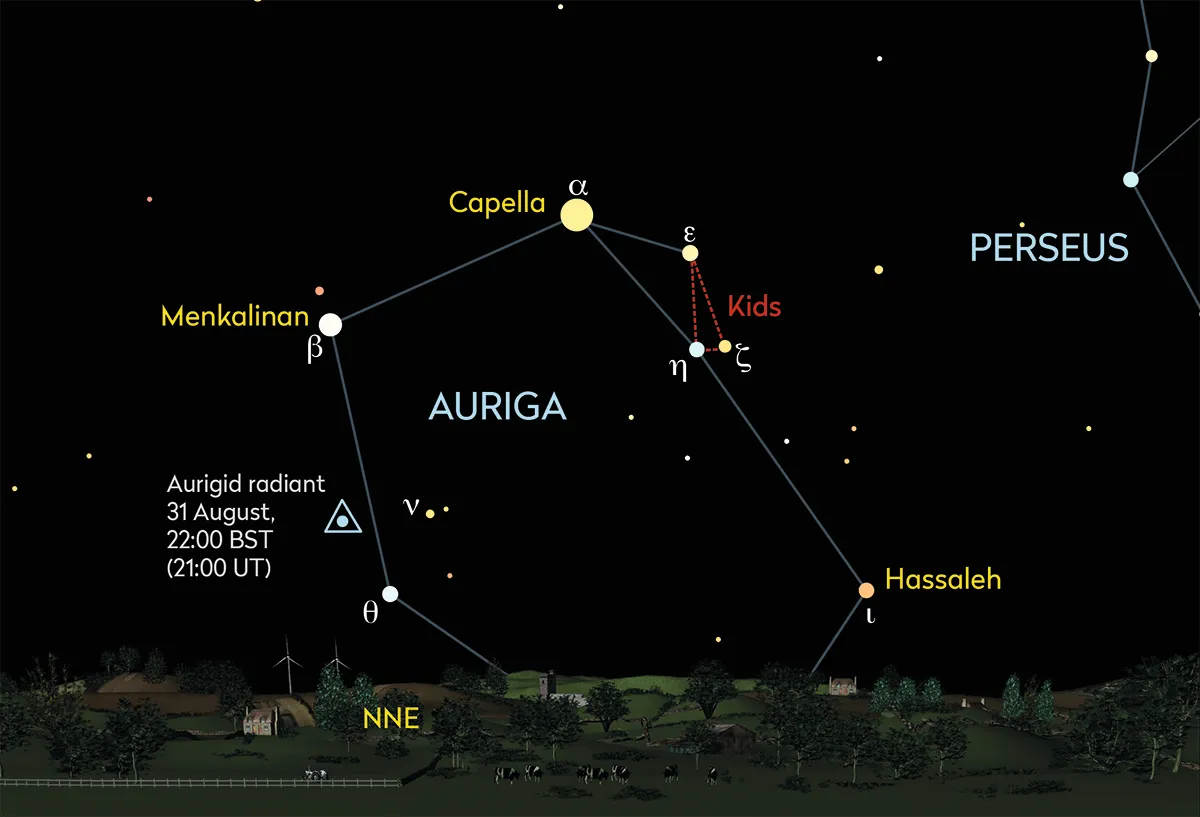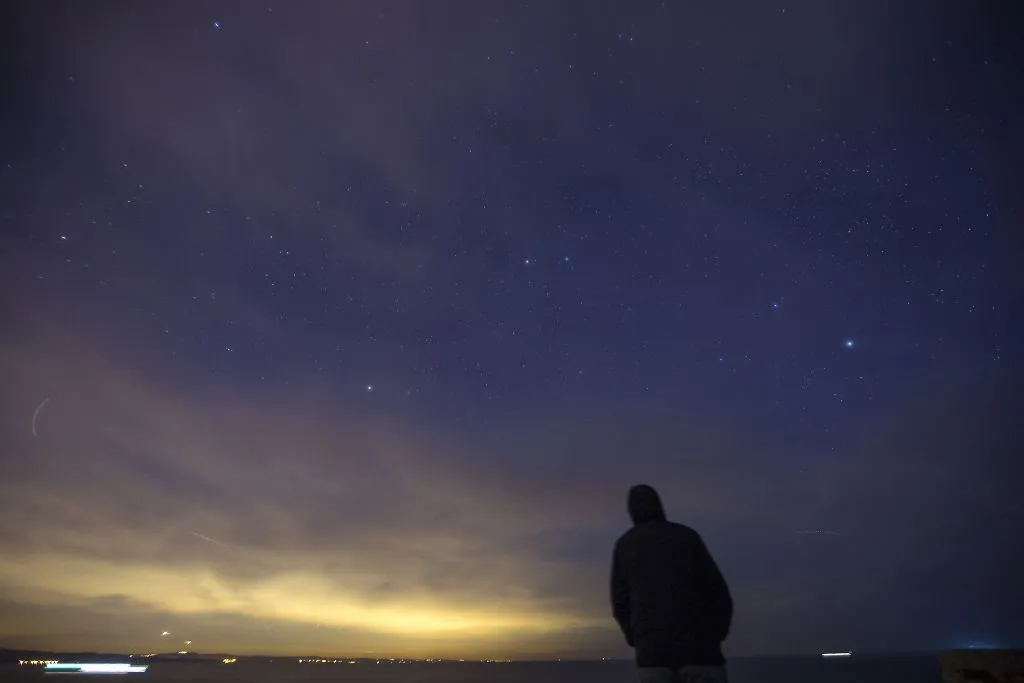Although the Perseid meteor shower steals the limelight, there are many lower rate showers active in Augusttoo.
Active between 28 August and 5 September, the low-rate Aurigid shower has produced interesting activity outbursts in the past.
On 31 August between 22:17–22:35 BST (21:17–21:35 UT) an alert has been issued for possible enhanced Aurigid activity.
Read our complete guide to meteor showers or find out what causes a meteor shower.

The best time to see the 2021 Aurigid meteor shower will be on 31 August between 22:00–23:00 BST (21:00–22:00 UT)
Typically exhibiting a ZHR (zenithal hourly rate) of 6 meteors per hour, this might rise to between 50–100 meteors per hour.
The zenithal hourly rate of a meteor shower is the total number of meteors you might expect to see during peak activity with absolutely perfect conditions, i.e. under clear, dark skies away from light pollution.
Bear in mind that the window of enhanced activity for the Aurigids is short and a visual hourly rate is often lower than the quoted ZHR.
Even so, a few recorded trails from the shower will make valuable observational evidence that the enhanced activity actually took place.
During the enhancement window the Moon will be a 35%-lit waning crescent and won’t rise until 23:44 BST (22:44 UT).
The radiant - the region of the sky from which the meteors appear to emanate - is located in the constellation of Auriga, the Charioteer, close to mag. +2.6 Theta (θ) Aurigae.
Unfortunately, this will be low at 22:17 BST (21:17 UT), barely scraping the northern horizon. This will have an adverse effect on the number of trails seen, reducing the visual rate.
How to observe a meteor shower

Meteor showers are a very easy astronomical event to observe as you don't need a telescope or any fancy equipment to do so. They are best seen with the naked eye, making it a great opportunity to get children and beginners excited about astronomy.
Juts find a dark place away from the light pollution of towns and cities, provided it is safe to do so.
If you want to observe from your back garden, turn off your lights so they don’t spoil the view.
Avoid using lights such as torches and mobile phones as this will spoil your dark adapted vision. If you need to see in the dark, use a red torch. If you need to look at your mobile phone, you may be able to turn your screen red in the settings.
It will take around 20 minutes for your eyes to dark adapt, but hopefully after a little wait you should start to see meteors shooting across the sky.
Remember: clear nights are cold nights. You will be sitting still for a long time, so wrap up warm, bring something to eat and perhaps a hot drink as well.
This guide originally appeared in the August 2021 issue of BBC Sky at Night Magazine.
